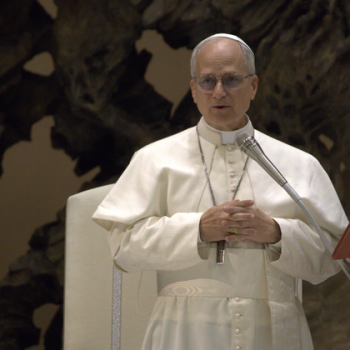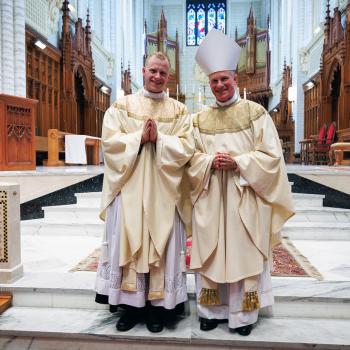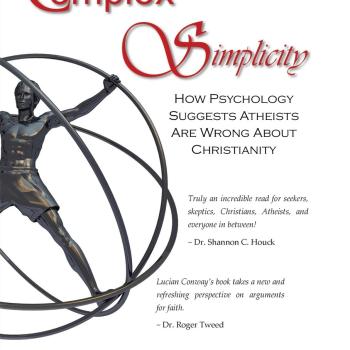
William James and other conversion researchers have long noted that adolescence is a time of change and identity formation, and as such, the period during which religious conversion is most likely to occur.
Upon the rise of deconversion research, it was similarly noted by researchers, particularly the pollsters at the Pew Research Center, that religious exit happens most frequently during adolescence. Children who grow up in the church will enter an age when they begin to consider their parents’ views in light of their identity formation, and make the decision to leave the faith of their childhood for other things.
And little wonder. Adolescence is a liminal period wherein one is passing from childhood to adulthood, and this is where changes in behavior are likely to occur. In fact, religion is just a small portion of the changes in behavior which occur during adolescence. This is a time when individuals begin exploring and experimenting with their sexuality, a time when one first sees suicide attempts begin to occur in a person (meaning that the number of children who attempt suicide are vanishingly small, however the number of teenage suicide attempts steepen dramatically). Sleeping patterns become erratic in adolescence, the person is more likely to begin experimenting with alcohol and narcotics, chronic mental health conditions such as autism, attention deficit disorder, and depression become more pronounced, and a variety of other changes occur.
These are largely a product of accelerated physical development, but partly due to the fact that the person is being socially transitioned into a new category: they are no longer a child, but they are not yet an adult. They are a teenager (with the accompanying knowing nod and eye-roll).
Returning to the subject of deconversion, the most common stereotype – far preceding deconversion research – is the idea that a Christian teen will go off to college, and through a combination of peer pressure and academic indoctrination, adopt anti-religious views and exit religion for good.
It was with these ideas in mind that, as I catalogued the data from my conversion research, I was greatly surprised to find that the average age of deconversion for my subjects was over the age of 40.
A Word About My Sample
One thing important to note going forward is that my sample of deconverts was drawn from very visible and vocal deconverts who, after deconverting, began writing and talking on the subject of their deconversion. The fact that my sample tended to leave the church after the age of 40 does not suggest that this is a general trend. What it instead suggests is that exiting religion over the age of 40 increases the likelihood that the person will be vocal about it.
Also worth noting is that, with one exception, all of the deconverts in my sample over the age of 40 were directly involved in ministry.
Liminal Periods
Our culture tends to lump people into five distinct age categories: children (ages 0 to 12), teenagers (ages 13 to 18), young adults (ages 19 – 39), middle aged (ages 40 – 59) and old (ages 60 up). As a result of this mostly social categorization, there are two liminal periods in life. The first being the transition from child to adult (adolescence) and the second being the transition from youth to aged (middle-age). We know from the statistics cited above that the majority of deconversions occur during adolescence, but this may be attributed to the individuals exiting the identities placed upon them by their parents and forming their own identities. In this respect, the person was religious by default, and had not chosen to be placed in that category. They were religious by dint of the social environment into which they were born and raised.
When it comes time to select their own identity and peer group, they make their first adult decisions, one of which is to not be religious. In this respect, it is hard to call the act a “deconversion,” and much more appropriate to call it “picking a side.”
Whereas people certainly do leave religion during their collegiate years, they are still at the tail end of adolescence, and are in effect still choosing sides.
The next most common wave of deconversions appears to occur during Middle Age, and Middle Age has its own reputation for identity change, commonly called the “Midlife Crisis.”
The Midlife Crisis
There are ample numbers of health magazines, websites, and self-help books which discuss the topic of midlife crisis, but it also has a reputation for being something of a bit of folk-wisdom and pop-psychology. So as I began to contemplate the connection between deconversion and midlife crisis, I did my due diligence to discover if research supported this idea.
And as it happens: research strongly supports it.
For brevity’s sake, I will here cite just one such study from Economica, simple titled “The Midlife Crisis” (2022). Bearing in mind the list of changes I mentioned that associated adolescence, consider what Economica has to say about the symptoms associated with midlife:
- sleeping problems
- alcohol dependence
- concentration difficulties
- memory problems
- intense job strain
- disabling headaches
- suicidal feelings
- extreme depression
Apparently, we can add to the list: religious change. This seems to be especially evident in individuals who are involved in the ministry to some capacity. Which should not be entirely surprising, given that “intense job strain” is listed among the disabling conditions most common in middle life.
In fact, evidence suggests that the most vocal ex-Christians are former ministers. This can be seen by the fact that the largest support groups for deconverts involve former ministers sharing with and supporting one another. Two examples of this are The Clergy Project, spearheaded by one of the individuals I included in my sample of deconverts: the former Pentecostal preacher, Jerry DeWitt. Another famous example of a group for support of ex-ministers is the website and forum set up as one of the earliest outreaches to deconverted pastors: Ex-Pastor.
Ministry and Job Satisfaction
It is worth mentioning at this point the research of Daniel H. Pink. Pink describes a body of research which suggests that when a person performs an activity for the activity’s sake – say putting a puzzle together, creating a work of art, or gardening – they receive a great deal of satisfaction and fulfillment from the activity. However, when the person is paid to do the same activity, it becomes a job with all of the pressure and discontent that accompanies jobs. In other words, the joy of the task is gone.
In my work looking at the biographies of these ex-pastors, one finds that these individuals largely gained their interest in ministry during adolescence – a process that conversion researchers refer to as an “intensification experience.” When these teenagers were full of the inspiration and fulfillment of doing the Lord’s work, acts such as preaching, organizing events, and leading religious groups were fulfilling on their own merits. However, consistent with Pink’s research, once these individuals became ministers by profession, that joy disappeared and the work became tedious, difficult, and full of headaches.
Combined with the pressures of a midlife crisis, the ministry experience could conceivably become nightmarish.
Deconversion Theory
Based on my personal model of deconversion, the process begins with various pressures and difficulties which build over time. What about unanswered prayers? What about the suffering in the world? What about those Bible problems and objections one cannot directly answer?
But building pressure is not enough to rob one of one’s belief, and such problems could be answered by simply admitting one does not know the answers but can continue to believe for other reasons.
The next stage is what I call the “trigger event.” At this point, one is forced or allowed to confront these difficulties and begin to let the problems sink in.
I would here suggest that a midlife crisis meets all of the qualifications of the trigger event. Consider all of the other difficulties the research suggests accompany midlife. Suicide, divorce, and career changes, not to mention the stereotypical features of midlife such as cheating on one’s wife with a younger woman or buying a new car. This is a period in which drastic actions or changes become more probable as the person begins to feel they can no longer put off their problems or desires to a later date. The pressure forces the person to act now rather than later.
Conclusion
It is important to note that actual research connecting midlife crisis as a causal factor for deconversion does not yet exist. This is a study for another day. However, the rise in deconversion rates after the age of 40, the similarities in identity change between adolescence and midlife, and the way that midlife crisis fits what is known regarding the pressures and facilitators of deconversion suggest that this is research which may bear some fruit when it is pursued.


















